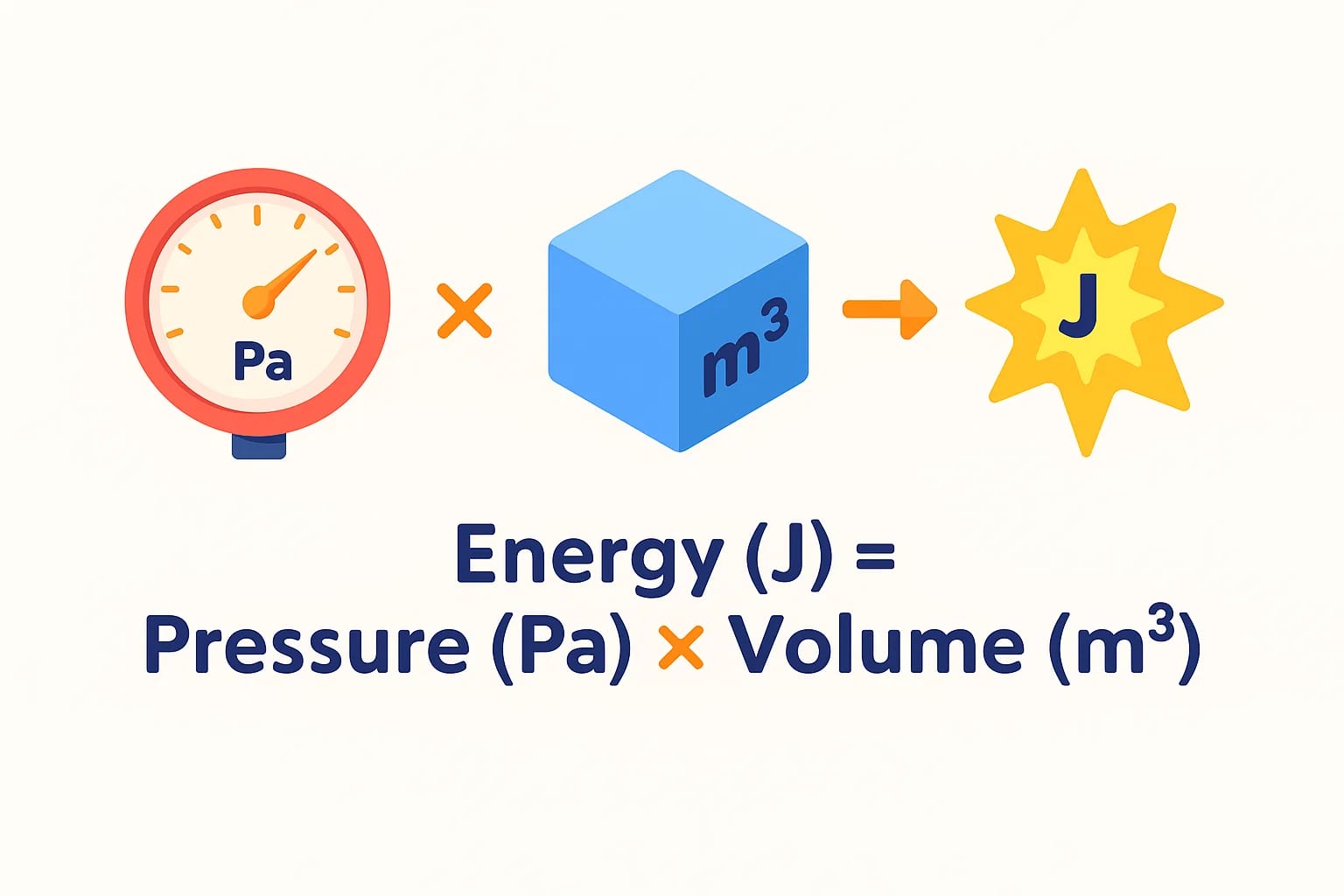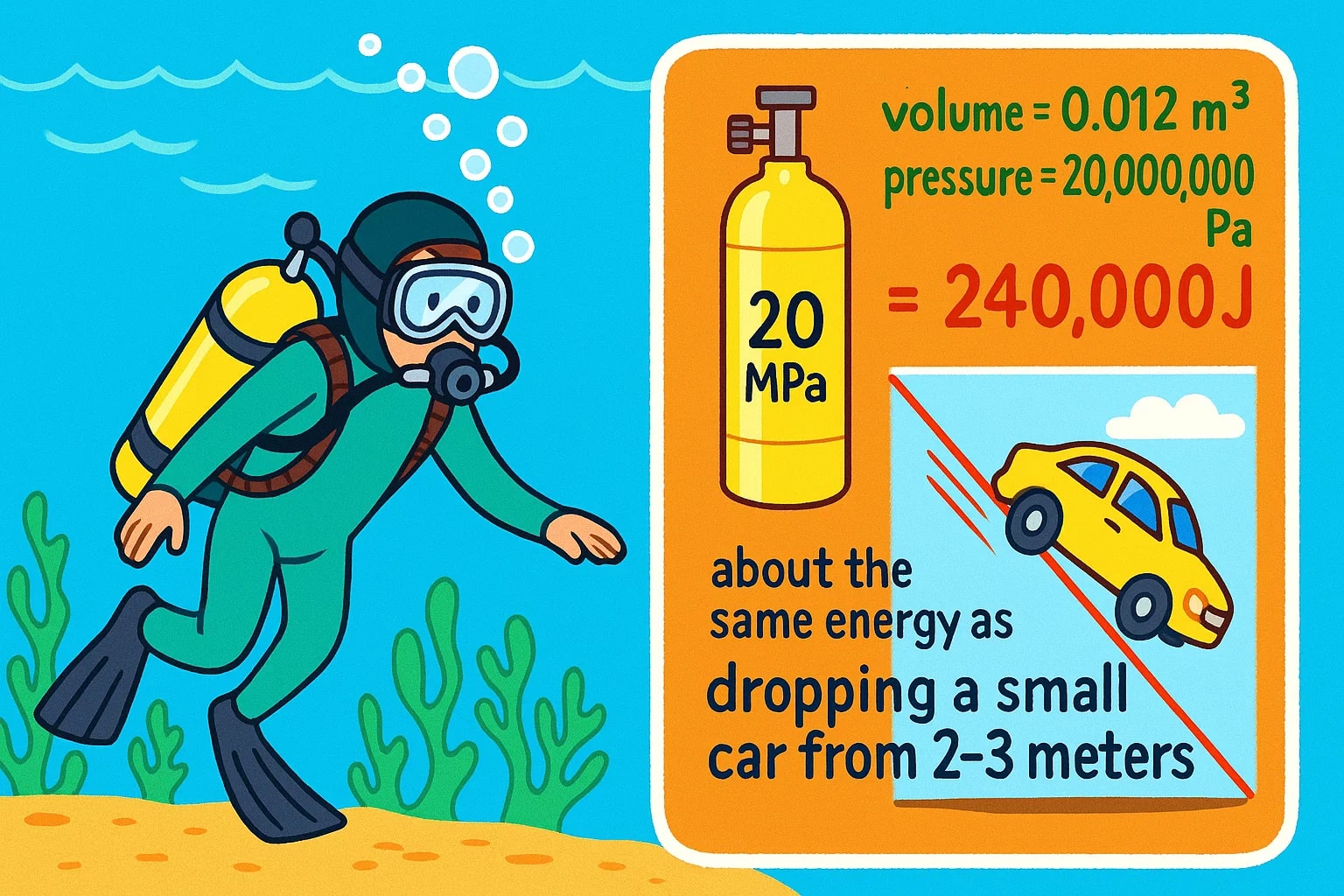pascal to joule – How to convert Pa to J
The conversion from pascal to joule is not a direct one — it requires knowing the volume over which the pressure acts. Pa measures pressure, while J measures energy or work done. In thermodynamics and fluid mechanics, converting between them is key to understanding how stored pressure translates into usable energy.
What is a pascal?
A pascal (Pa) is the SI unit of pressure, defined as one newton per square meter:P = F ÷ A
It’s used in many fields, from weather reporting to industrial hydraulics. For large values, the megapascal (MPa) is common — for example, in compressed air systems or structural engineering.
What is a joule?
A joule (J) is the SI unit of energy, defined as the work done when a force of one newton moves an object one meter in the direction of the force:1 J = 1 N × 1 m
Joules are used in electricity, mechanics, thermodynamics, and even food energy measurements.
How to convert pascal to joule
To convert pressure (Pa) into energy (J), you need the volume (in cubic meters) over which the pressure is applied:Energy (J) = Pressure (Pa) × Volume (m³)
Example: If compressed air is at 300 000 Pa and fills a container with a volume of 0.02 m³:Energy = 300 000 × 0.02 = 6 000 J
For reverse conversion:Pressure (Pa) = Energy (J) ÷ Volume (m³)

You can calculate this in seconds with our Energy Converter, and if your curiosity goes beyond pressure and energy, explore the full range in our Conversion Tools library.
Do you know?
-
Pascal fact: A single sheet of paper exerts about 1 Pa of pressure on the surface beneath it — an incredibly small amount.
-
Joule fact: One joule is roughly the energy needed to lift an apple one meter against gravity.
-
Pascal fact: The Mariana Trench experiences water pressure of over 110 million Pa at its deepest point.
-
Joule fact: An LED flashlight running for an hour might consume around 18 000 J of electrical energy.
Breathing Under Pressure: The Scuba Tank Story
In scuba diving, compressed air tanks store breathable air at pressures of up to 20 MPa. While divers think in terms of “bar” or “psi” for safety checks, engineers need to translate that pressure into joules to understand the total energy stored.

For example, a standard 12-liter scuba tank at 20 MPa has a volume of 0.012 m³. The stored energy can be estimated as:Energy = 20 000 000 × 0.012 = 240 000 J
That’s enough to supply a diver with air for nearly an hour at moderate depth. But it’s also why handling and maintenance are critical — the energy in a single tank is equivalent to the work of dropping a small car from a height of 2–3 meters.
In this case, pascals describe the tank’s internal pressure, but joules reveal the true scale of stored energy — a difference that can mean life or death if not respected.
Linking Pressure to Power
The pascal to joule conversion shows how two very different measurements can describe the same physical system. Pressure tells you the intensity of force over an area, while energy reveals the total work that force can perform over a given volume.
In engineering, safety, and physics, being able to switch between these units keeps systems efficient, safe, and predictable. Whether you’re working with compressed gases, hydraulic systems, or atmospheric energy, this conversion is more than just math — it’s a tool for seeing the bigger picture.

